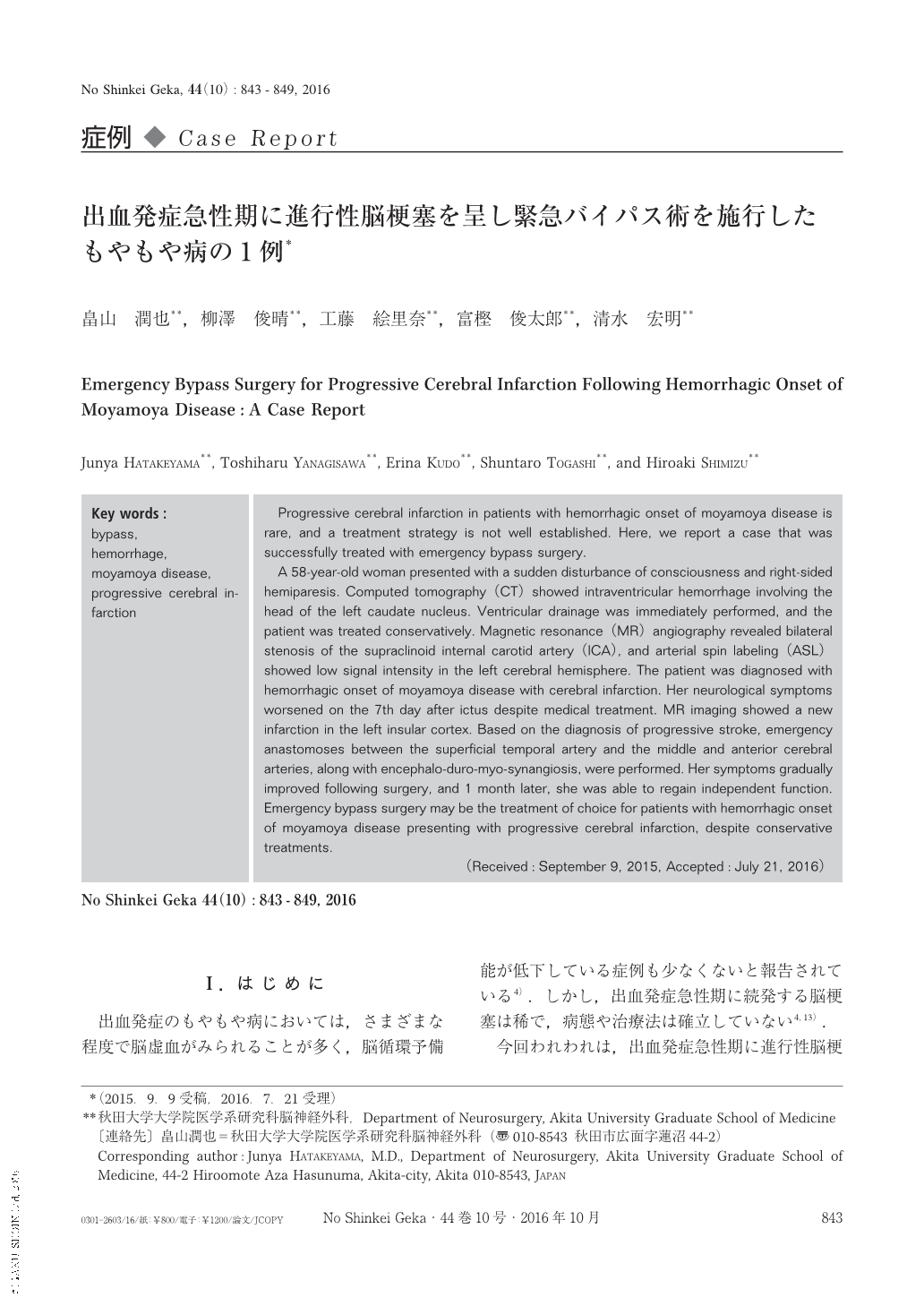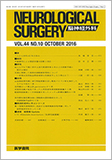Japanese
English
- 有料閲覧
- Abstract 文献概要
- 1ページ目 Look Inside
- 参考文献 Reference
Ⅰ.はじめに
出血発症のもやもや病においては,さまざまな程度で脳虚血がみられることが多く,脳循環予備能が低下している症例も少なくないと報告されている4).しかし,出血発症急性期に続発する脳梗塞は稀で,病態や治療法は確立していない4,13).
今回われわれは,出血発症急性期に進行性脳梗塞を呈した成人もやもや病に対して,急性期に緊急バイパス術を施行し,良好な結果を得た1例を経験したので,若干の文献的考察を加えて報告する.
Progressive cerebral infarction in patients with hemorrhagic onset of moyamoya disease is rare, and a treatment strategy is not well established. Here, we report a case that was successfully treated with emergency bypass surgery.
A 58-year-old woman presented with a sudden disturbance of consciousness and right-sided hemiparesis. Computed tomography(CT)showed intraventricular hemorrhage involving the head of the left caudate nucleus. Ventricular drainage was immediately performed, and the patient was treated conservatively. Magnetic resonance(MR)angiography revealed bilateral stenosis of the supraclinoid internal carotid artery(ICA), and arterial spin labeling(ASL)showed low signal intensity in the left cerebral hemisphere. The patient was diagnosed with hemorrhagic onset of moyamoya disease with cerebral infarction. Her neurological symptoms worsened on the 7th day after ictus despite medical treatment. MR imaging showed a new infarction in the left insular cortex. Based on the diagnosis of progressive stroke, emergency anastomoses between the superficial temporal artery and the middle and anterior cerebral arteries, along with encephalo-duro-myo-synangiosis, were performed. Her symptoms gradually improved following surgery, and 1 month later, she was able to regain independent function. Emergency bypass surgery may be the treatment of choice for patients with hemorrhagic onset of moyamoya disease presenting with progressive cerebral infarction, despite conservative treatments.

Copyright © 2016, Igaku-Shoin Ltd. All rights reserved.


